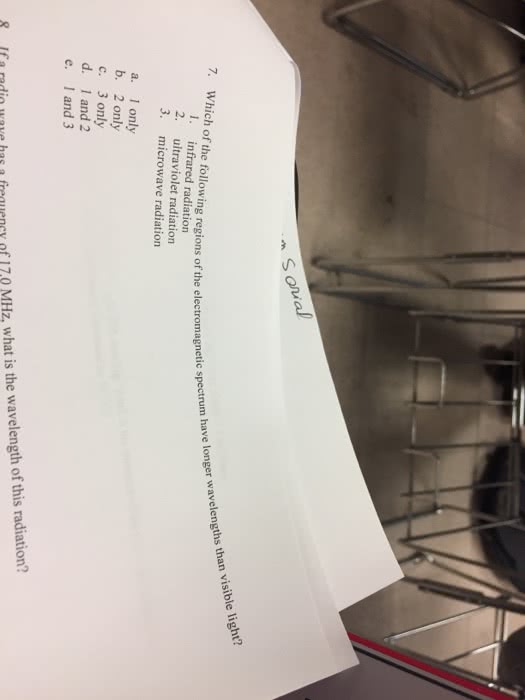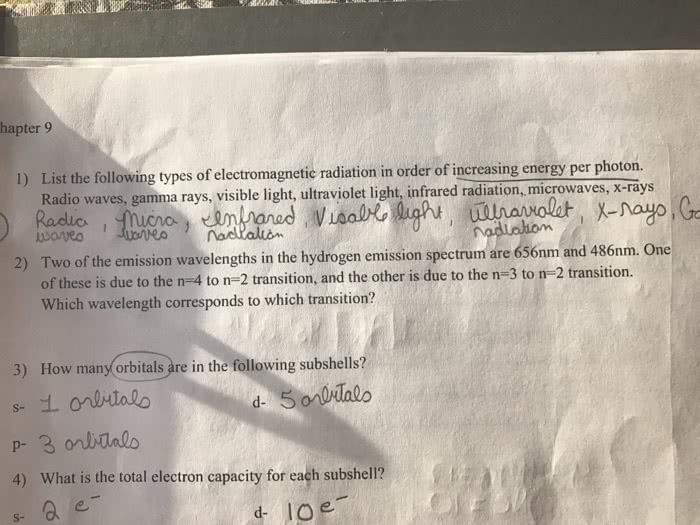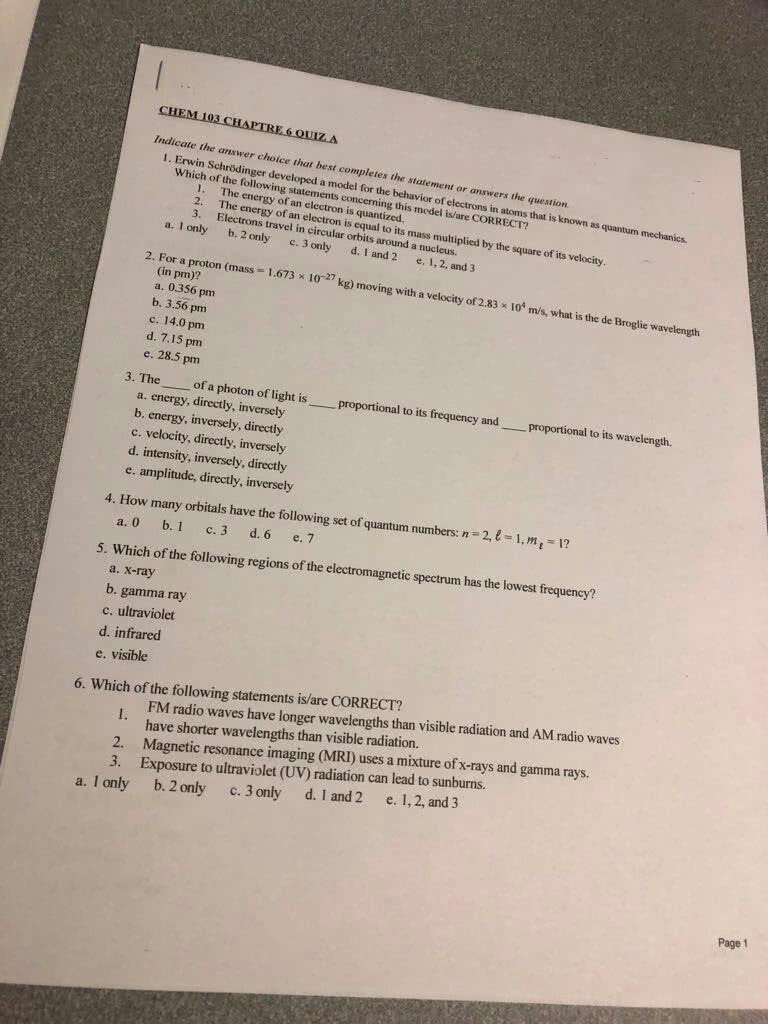CHEM103 Lecture Notes - Lecture 3: Electromagnetic Spectrum, Radiant Energy, Refraction

128
CHEM103 Full Course Notes
Verified Note
128 documents
Document Summary
The brightness of light is determined by the amplitude. Am (amplitude modulation) and fm (frequency modulation) radio is based on the properties of amplitude of sound waves. The electromagnetic spectrum is a constant continuum of radiant energy: there are no breaks in the spectrum between regions of radiant energy. Visible light on the electromagnetic spectrum is the region of wavelengths between 750 and 400 nanometers. Monochromatic light describes light of a single wavelength: sunlight is not monochromatic light because it has light consisting of numerous wavelengths such as infrared, ultraviolet, and visible. Waves with shorter wavelengths have higher energy. Waves with longer wavelengths have less energy. Wavelength, speed, and frequency are related using the following formula: = the speed of light (3. 00 x 108 m/s) Diffraction and interference: when a wave contacts an object it bends, particles do not bend when they contact an object, waves demonstrate constructive and destructive interference.




